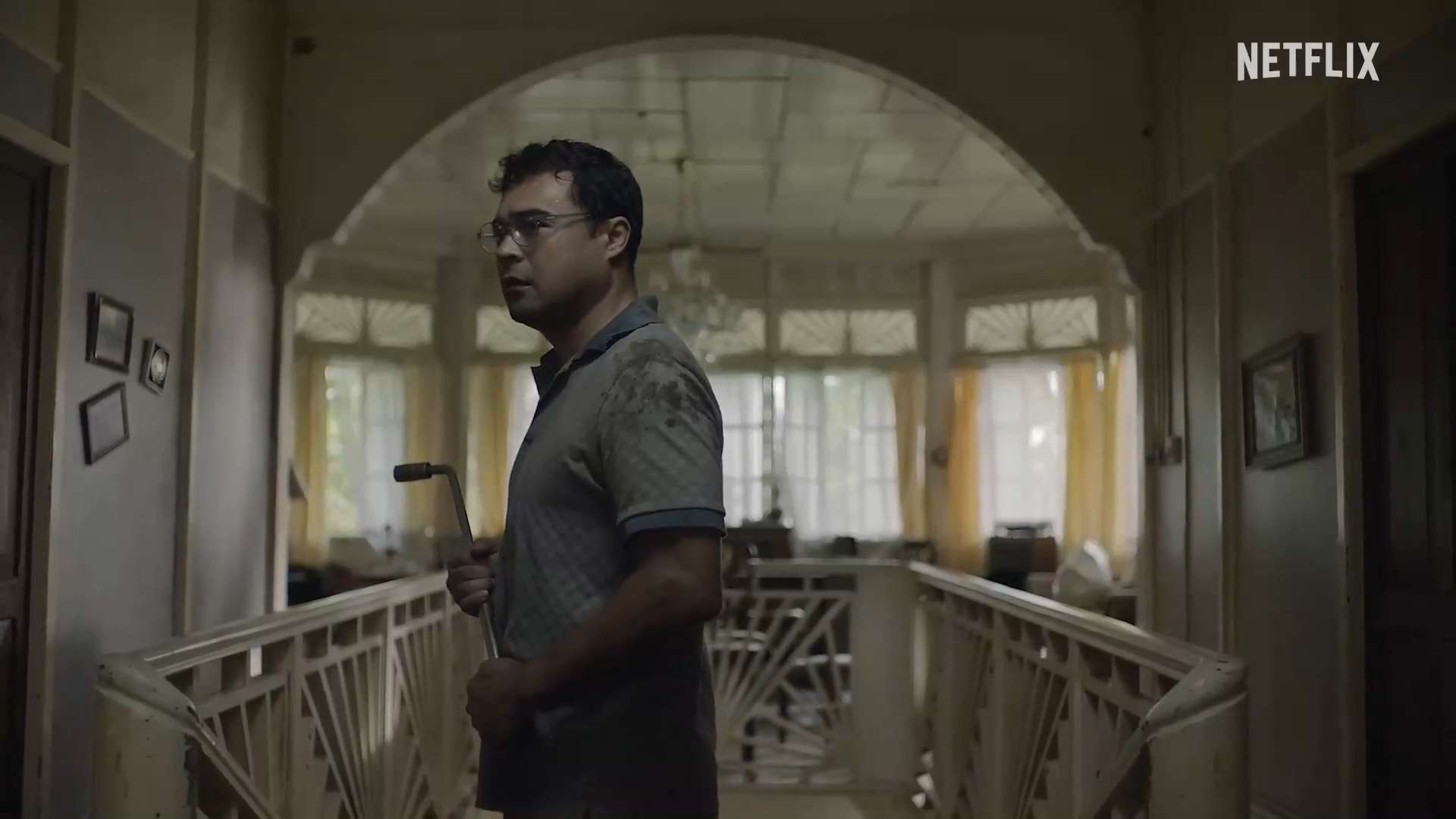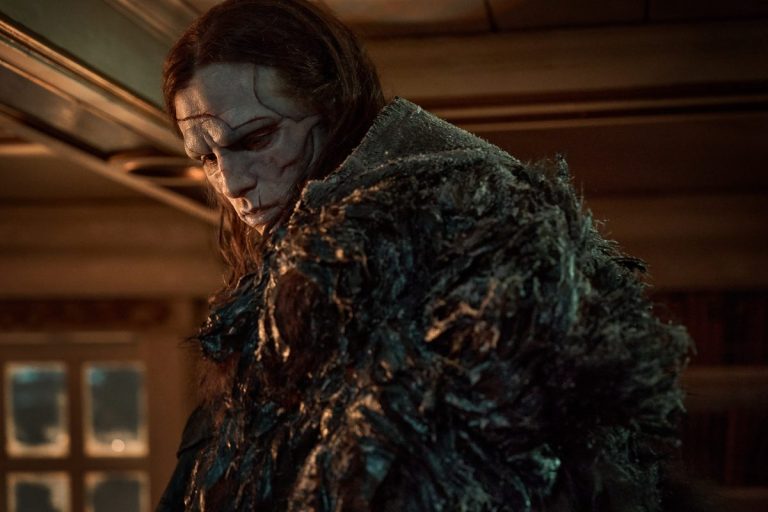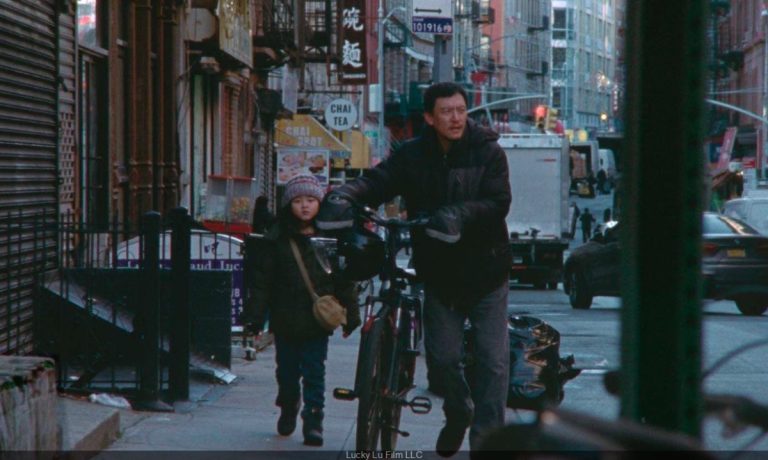“Outside,” (2024) the latest Filipino offering on Netflix, is a dense psychological drama set in the quickfire world of the zombie apocalypse. It traverses the familiar grim reality of an apocalypse with a moderate dose of zombie-related dread and wanton violence. What writer-director Carlo Ledesma explores more in his film is the horror of childhood trauma, the festering of which creates a cycle of violence that is more terrible than any of the undead’s actions. The price for such an attempt is the wrath of the fans of zombie films. “Outside” is bereft of pulsating zombie-killing actions that one is accustomed to in such films. Instead, it examines the frailties of human emotions and the ugliness of the very much alive.
The film starts with Francis’s (Sid Lucero) and Iris’ (Beauty Gonzalez) wedding video, earmarking the relationship to be the key subject in the story. Fast forward a few years and the Philippines is punched with a devastatingly grotesque viral outbreak. Like most zombie films, the infection spreads via the usual mode of getting bitten. Francis and Iris are weary and grizzled. They, along with their two sons, Josh (Marco Masa) and Lucas (Aiden Tyler Patdu) travel through the beautiful countryside in a severely dented van. All signs point that the family has gone through turmoil.
Upon Francis’ insistence, the family takes shelter in his parents’ farmhouse. Francis finds his father has taken the ultimate measure to avoid being a zombie. He shot himself in the head. Francis takes the gun, and the watch, from his father’s corpse. The gun immediately proves to be handy, as Francis has to shoot his zombified mother in the face in the next turn of events. Once assured the house is free of danger, Francis insists on remaining there as he feels it is safer ‘inside.’
As the story progresses, the past starts to unfold. Gradually, we realize why “Outside” is different from the trademark zombie films. The apocalyptic ‘present’ of the story merely acts as a trigger. A scene upon which the horror, influenced by the past, takes center stage. Yes, the central characters often have to evade a horde of zombies, have to scour the field for food, and have to ration what they have. However, the bigger challenge for survival for them is themselves, primarily the patriarch, Francis.

This is where Ledesma’s story veers toward “The Shining” territory. The house, where Francis spent his childhood, starts to change him. A limited, but cleverly infused, amount of flashbacks tell that Francis was abused by his father in that very same house. The scars of that can still be found as Francis often succumbs to night terrors. With each passing day, Francis starts to take after his father. The wheel of abuse from the dominant position of the patriarch begins to roll and starts to gather momentum as Francis’ mental state starts to deteriorate.
“Outside” is also a tableau of the aftermath of a marriage’s deterioration. With each passing moment between them, Francis and Iris show it is not the apocalypse that has taken a toll on their relationship. It is they themselves. Both of them have made mistakes by their own admission; mistakes, despite efforts from both of them, continue to be irremediable. Sid Lucero’s Francis is a reluctant and refrained homage to Jack Torrance. Lucero is deft at being vulnerable and tormenting. Francis’ constant efforts to keep his family chained to him are well explored by Lucero’s portrayal. Beauty Gonzalez effuses the depression that Iris is going through. Gonzalez paints both the weariness of the perpetually aloof Iris and the absolute breakdown of the desperate-to-survive Iris with equal success.
Despite not truly embracing the genre tropes, “Outside” is proficient when it comes to handling its zombies. Grotesquely dolled up, the zombies in this film also carry a creepily eccentric tick. They constantly say their last living words. Francis’ mother’s decapitated undead body attacking him while saying ‘sorry’ was a terrific start. The cinematography of Shin-Fung Cheung has to be lauded too. Whether it is drone shots of the lush landscape ravaged by the zombies, or the characters’ isolated shots framed by the architecture of the menacing farmhouse, Cheung’s camera makes “Outside” a visual delight. There is a particular tracking shot, where Francis kills and evades a pack of zombies over the bridge, which puts the cherry on top. It leaves the viewers wanting for more such actions.
“Outside” is not the usual affair one might expect from a zombie-centric film. But, if you are in the mood for something different this Halloween season, it could be just what you need.

![Savage [2018] NYAFF – A High Octane Chinese Thriller](https://79468c92.delivery.rocketcdn.me/wp-content/uploads/2019/06/Savage-2019-high-on-films-768x398.jpg)




